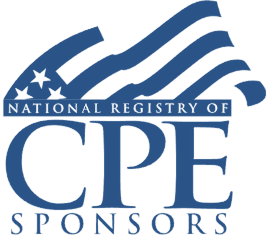- videocam On-Demand Webinar
- signal_cellular_alt Intermediate
- card_travel Tax Preparer
- schedule 110 minutes
Generation-Skipping Transfer Tax: Fundamentals and Planning Opportunities
Identifying Skip Persons, Direct vs. Indirect Skips, Exemption Allocations, and More
Welcome! Save 30% on all CLE, CPE, and Professional Skills webinars, plus 15% off any annual pass with code HOLIDAY25
About the Course
Introduction
In this course, our panel of estate experts will describe the fundamentals of the complex federal generation-skipping transfer (GST) tax in simple and clear terms. They will also talk about GST planning opportunities, particularly those that should be implemented prior to the reduction in the GST tax exemption.
Description
A significant challenge for estate advisers and compliance professionals is navigating the GST tax, which has the reputation of being one of the most complicated tax rules. However, the basic mechanics of the GST tax regime lie in identifying situations in which inter-generational transfers circumvent estate or gift tax liability.
Tax advisers serving high net worth individuals, as well as fiduciary compliance professionals, need to understand the fundamentals of the GST tax to avoid unnecessary tax costs.
A GST occurs when a person gifts or bequeaths property to a person who is two or more generations younger (37.5 years) than the person transferring assets. The recipient of a GST is a "skip person." The GST tax aims to prevent taxpayers from avoiding estate or gift taxes by imposing a flat tax on any gifts to skip persons more than the GST estate tax exemption amount.
There are two types of GSTs--direct skips and indirect skips. Tax advisers must be able to identify both kinds of transfers subject to the tax to calculate exemption amounts and accurately report GST on Form 709.
Listen as our experienced panel provides practical guidance on allocating GST exemptions and on the elections available to tax advisers and compliance professionals to minimize the impact of GST tax.
Presented By

Mr. Clear regularly counsels clients on the far-reaching financial implications of estate planning, estate and trust administration, probate litigation, and business succession planning. His estate planning practice includes assisting individuals and families in tax-efficient and practical estate and gift planning, including the preparation of wills, revocable living trusts, insurance trusts, and entities to own special family assets such as vacation homes and collections. Mr. Clear’s estate and trust administration practice often dovetails with his probate litigation experience, where he advises clients in will and trust construction cases, contested accountings, fiduciary removal proceedings, payment of unpaid claims, and conservatorship and guardianship matters. Mr. Clear also assists business owners with succession planning by presenting to family groups on business/estate planning matters and by preparing business entities, shareholders’ agreements, buy-sell agreements, and grantor-retained annuity trusts. He often facilitates the sale or purchase of business assets.

Mr. Daniels focuses his practice representing business owners, private equity and hedge fund founders, family offices, corporate executives and other wealthy individuals and their families. He is a co-author of Trusts and Estates Legal Strategies (2008 Aspatore Books) and has written for various publications, including Trusts and Estates magazine, Estate Planning magazine, Practical Tax Strategies magazine, the National Law Journal and Exempt Organization Review. He also has been quoted on trust and tax-related subjects in the Wall Street Journal, Kiplinger's Personal Finance and Financial Planning.
-
BARBRI is a NASBA CPE sponsor and this 110-minute webinar is accredited for 2.0 CPE credits.
-
BARBRI is an IRS-approved continuing education provider offering certified courses for Enrolled Agents (EA) and Tax Return Preparers (RTRP).
Date + Time
- event
Wednesday, November 22, 2023
- schedule
1:00 p.m. ET./10:00 a.m. PT
- Overview of how GST tax fits into the wealth transfer tax regime
- Defining the rules governing when a GST takes place
- Identifying skip persons
- Direct skip transactions
- Indirect skip transactions
- GST exemption and allocation rules
- Intro to Form 709
- Illustration of a basic skip transaction and how to report
The panel will discuss these and other important issues:
- Identifying "skip persons" and gifts that qualify as GSTs
- Keeping track of exemption amounts accumulated over multiple years
- Direct skips vs. indirect skips
- Guide to Form 709 for gifts that must be reported but do not incur GST tax
- Calculating GST tax on taxable gifts
Learning Objectives
After completing this course, you will be able to:
- Recognize transfers that are subject to GST tax reporting requirements
- Distinguish between direct skip persons and indirect skip persons
- Identify filing requirements on Form 709 to report GSTs
- Discern how to calculate GST exemption amounts
- Field of Study: Taxes
- Level of Knowledge: Intermediate
- Advance Preparation: None
- Teaching Method: Seminar/Lecture
- Delivery Method: Group-Internet (via computer)
- Attendance Monitoring Method: Attendance is monitored electronically via a participant's PIN and through a series of attendance verification prompts displayed throughout the program
- Prerequisite: Three years+ business or public firm experience at mid-level within the organization preparing moderate-to-complex tax forms and schedules. Specific knowledge of estate tax rules and reporting; basic familiarity with gift tax concepts, exemption calculations, generation skipping taxes and portability of spousal lifetime exclusions.

BARBRI, Inc. is registered with the National Association of State Boards of Accountancy (NASBA) as a sponsor of continuing professional education on the National Registry of CPE Sponsors. State boards of Accountancy have final authority on the acceptance of individual courses for CPE Credits. Complaints regarding registered sponsons may be submitted to NASBA through its website: www.nasbaregistry.org.

BARBRI is an IRS-approved continuing education provider offering certified courses for Enrolled Agents (EA) and Tax Return Preparers (RTRP).

BARBRI CE webinars-powered by Barbri-are backed by our 100% unconditional money-back guarantee: If you are not satisfied with any of our products, simply let us know and get a full refund. Contact us at 1-800-926-7926 .
Unlimited access to premium CLE courses:
- Annual access
- Available live and on-demand
- Best for attorneys and legal professionals
Unlimited access to premium CPE courses.:
- Annual access
- Available live and on-demand
- Best for CPAs and tax professionals
Unlimited access to premium CLE, CPE, Professional Skills and Practice-Ready courses.:
- Annual access
- Available live and on-demand
- Best for legal, accounting, and tax professionals
Unlimited access to Professional Skills and Practice-Ready courses:
- Annual access
- Available on-demand
- Best for new attorneys
Related Courses
Recommended Resources

How CPE Can Bridge the Gap Between What You Know and What You Need to Know
- Career Advancement



